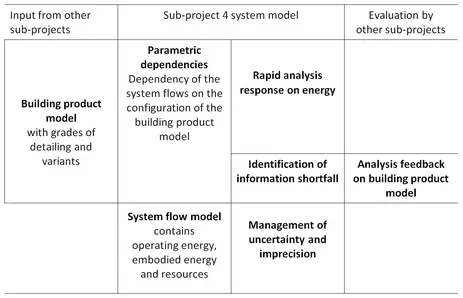EarlyBIM 1
Subproject 4
Evaluation of building design variants in early design phases on the basis of adaptive detailing strategies


Project Partners
RUB (Ruhr-Universität Bochum)
Lehrstuhl für Informatik im Bauwesen Prof. Dr.-Ing. Markus König (Sprecher)
Universität Duisburg-Essen Institut für Massivbau
Prof. Dr.-Ing. Martina Schnellenbach-Held
KU Leuven (Katholieke Universiteit Leuven, Belgien) Architectural Engineering Group,
Prof. Dr.-Ing. Philipp Geyer
TUM
Lehrstuhl für Computergestützte Modellierung und Simulation
Prof. Dr.-Ing. André Borrmann
Lehrstuhl für Architekturinformatik
Prof. Dr.-Ing. Frank Petzold
Summary
The DFG Senate decided to support the group of researchers investigating the “Evaluation of building design variants in early design phases on the basis of adaptive detailing strategies” (FOR 2363), in which three chairs and institutes of the TUM are involved: the Chair of Computational Modeling and Simulation (Prof. André Borrmann), the Chair of Architectural Informatics (Prof. Frank Petzold), and the Institute of Energy Efficient and Sustainable Design and Building (Prof. Werner Lang). The research project aims to improve the interplay between the architectural design process and computational simulation procedures in order to be able to evaluate different alternative drafts according to formal criteria at an early stage. Many well-developed simulation procedures do already exist in the construction industry, for instance for making structural calculations and calculating energy requirements, but the available tools require very precise inputs, so that they are unable to handle the imprecision and vagueness as to geometry and material that are normally encountered during the early phases. The group of researchers is therefore developing ways to formally define levels of detailing in digital building information models that also include a description of geometric and semantic uncertainties. A further focus is placed on adjusting simulation procedures with regard to support structures and energy so that they can work with approximate, imprecise input models. And finally, suitable ways are to be created to visualise imprecise information and interact with appropriate models.